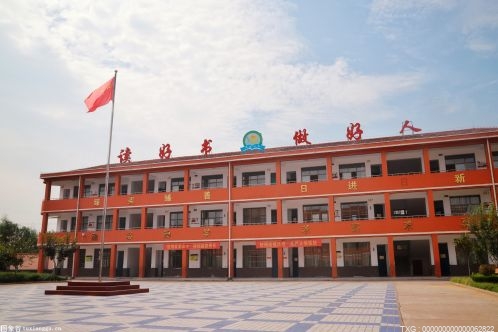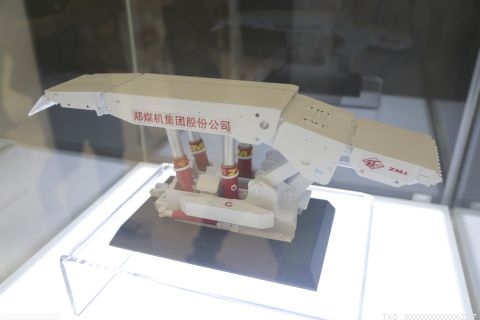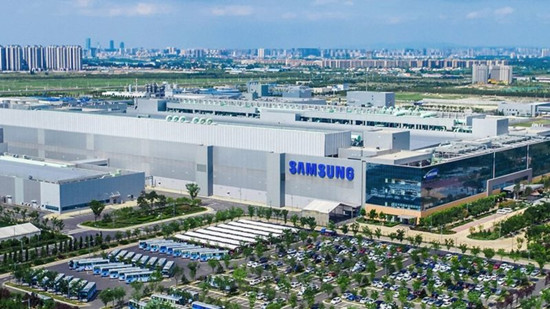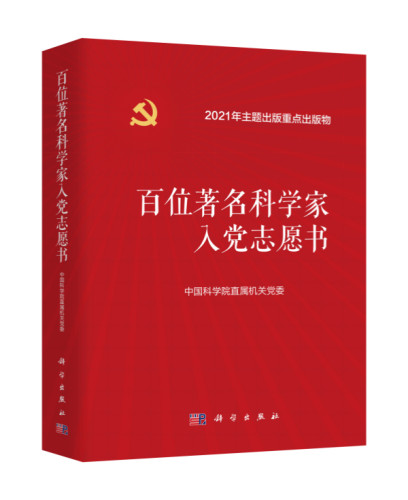撰文|郑建华、赵露阳
1
Op在虚拟机里的执行
1.1 PhysicalRun和InstructionsBuilder
上一篇文章《OneFlow源码解析:Op、Kernel与解释器》中提到:
这个PhysicalRun函数里包裹着一个lambda函数:
 (相关资料图)
(相关资料图)
JUST(PhysicalRun([&](InstructionsBuilder* builder) -> Maybe
其中,lambda函数接受一个InstructionsBuilder指针(builder),并调用builder->Call方法,用于实际完成Op指令在VM中的构建。而PhysicalRun(https://github.com/Oneflow-Inc/oneflow/blob/88f147d50e75d1644e552ed445dd58f9b5121ea5/oneflow/core/framework/instructions_builder.h#L160)在 oneflow/core/framework/instructions_builder.h中定义,其接受lambda函数作为模版参数(CallbackT):
// Make VM instructions with instruction builder and run instructions with physical/local view.template
可见,PhysicalRun函数中,首先初始化一个InstructionsBuilder,然后将InstructionsBuilder指针作为参数传给lambda函数,完成实际指令的构建;最后通过vm::Run()方法将该指令发送至VM,等候VM实际调度和执行。Run方法如下:
Maybe
可以看见,Run()方法获取了全局单例的VM对象指针,然后通过vm的Receive()方法,将该条指令发送给虚拟机(所以这里Run其实有点歧义,更贴切的意思,其实是指令发送或传送)。
这个VirtualMachine->Receive方法很重要,会在后面的第2.章节中详细展开。
1.2 InstructionsBuilder
上面PhysicalRun函数中的InstructionsBuilder,类似一个指令构建的helper,InstructionsBuilder的系列方法配合指令策略(InstructionPolicy),可以帮助构建不同类型的vm指令。
从InstructionsBuilder
(https://github.com/Oneflow-Inc/oneflow/blob/88f147d50e75d1644e552ed445dd58f9b5121ea5/oneflow/core/framework/instructions_builder.h#L47)的定义中,我们可以看到指令的构建方法,其中常用方法如下:
// 用于lazy mode(nn.Graph)// Build VM execution instructions with NNGraph"s inputs/outputs/parameters for NNGraph execution.Maybe
1.3 InstructionPolicy
InstructionPolicy
(https://github.com/Oneflow-Inc/oneflow/blob/88f147d50e75d1644e552ed445dd58f9b5121ea5/oneflow/core/vm/instruction_policy.h#L34)——指令策略,通常用于配合InstructionsBuilder实际构建出不同的vm指令。InstructionPolicy的子类实现如下:
这些子类的InstructionPolicy可近似认为是指令类型。如,用于Op执行的OpCallInstructionPolicy、用于Tensor内存释放的ReleaseTensorInstructionPolicy、用于屏障阻塞的BarrierInstructionPolicy等。
以Op执行为例:
JUST(PhysicalRun([&](InstructionsBuilder* builder) -> Maybe
实际上是通过InstructionsBuilder的Call方法
(https://github.com/Oneflow-Inc/oneflow/blob/88f147d50e75d1644e552ed445dd58f9b5121ea5/oneflow/core/framework/instructions_builder.cpp#L355),配合OpCall的指令策略(OpCallInstructionPolicy),构造了OpCall指令:
Maybe
并将构建好的指令塞入指令列表,待后续VM调度并实际执行。
2
虚拟机的运行原理
2.1 VM初始化
OneFlow环境初始化时,会触发VirtualMachineScope
(https://github.com/Oneflow-Inc/oneflow/blob/88f147d50e75d1644e552ed445dd58f9b5121ea5/oneflow/core/vm/virtual_machine_scope.cpp#L24)的初始化:
VirtualMachineScope::VirtualMachineScope(const Resource& resource) { Singleton
进而触发VM对象——VirtualMachine
(https://github.com/Oneflow-Inc/oneflow/blob/88f147d50e75d1644e552ed445dd58f9b5121ea5/oneflow/core/vm/virtual_machine.cpp#L81)的初始化。VM作为一个Singleton对象,全局唯一。
VirtualMachine::VirtualMachine() : disable_vm_threads_(false), scheduler_stopped_(false) { // Class VirtualMachineEngine only cares the basic logical of vm, while class VirtualMachine // manages threads and condition variables. // In order to notify threads in VirtualMachineEngine, a notify callback lambda should be take as // an argument for VirtualMachineEngine"s constructor. engine_ = intrusive::make_shared
VM初始化中最重要的内容,便是:
1.初始化了一个VM的执行引擎——VirtualMachineEngine
2.通过VirtualMachine::ScheduleLoop启动了VM的调度线程
VirtualMachine::ScheduleLoop
VM对象只负责条件变量和线程管理;而主要业务逻辑处理(包括指令构建、调度、派发和执行等),则由VirtualMachineEngine
(https://github.com/Oneflow-Inc/oneflow/blob/88f147d50e75d1644e552ed445dd58f9b5121ea5/oneflow/core/vm/virtual_machine_engine.h#L47)对象负责;VM初始化时还开辟了单独的schedule线程用于VM引擎处理调度逻辑,在VirtualMachine::ScheduleLoop
(https://github.com/Oneflow-Inc/oneflow/blob/88f147d50e75d1644e552ed445dd58f9b5121ea5/oneflow/core/vm/virtual_machine.cpp#L292)中:
void VirtualMachine::ScheduleLoop(const std::function
ScheduleLoop是一个近似于busy loop的while循环,pending_notifier_是VM内部维护的成员,实际上是ScheduleLoop线程的通知/唤醒者,其定义位于oneflow/oneflow/core/common/notifier.h:
class Notifier final { public: OF_DISALLOW_COPY_AND_MOVE(Notifier); Notifier() : notified_cnt_(0), is_closed_(false) {} ~Notifier() = default; NotifierStatus Notify(); NotifierStatus WaitAndClearNotifiedCnt(); void Close(); private: size_t notified_cnt_; std::mutex mutex_; bool is_closed_; std::condition_variable cond_;};
其主要维护了互斥锁mutex_、线程是否关闭的flag is_closed_、条件变量cond_。忽略线程唤醒、超时相关逻辑,ScheduleLoop中最重要的事情是engine_->Schedule(schedule_ctx);
while (pending_notifier_.WaitAndClearNotifiedCnt() == kNotifierStatusSuccess) { auto start = std::chrono::steady_clock::now(); ... do { do { ... engine_->Schedule(schedule_ctx); ... } while (!engine_->SchedulerThreadUnsafeEmpty()); } while (MicrosecondsFrom(start) < kWorkingMicroseconds); }
当VM维护的指令队列不为空时,便不断唤醒VM引擎执行指令调度逻辑——engine->Schedule()
2.2 VM指令调度
void VirtualMachineEngine::Schedule(const ScheduleCtx& schedule_ctx) { // Release finished instructions and try to schedule out instructions in DAG onto ready list. if (unlikely(mut_active_stream_list()->size())) { ReleaseFinishedInstructions(schedule_ctx); } // Try run the first barrier instruction. if (unlikely(mut_barrier_instruction_list()->size())) { TryRunBarrierInstruction(schedule_ctx); } // Handle pending instructions, and try schedule them to ready list. // Use thread_unsafe_size to avoid acquiring mutex lock. // The inconsistency between pending_instruction_list.list_head_.list_head_.container_ and // pending_instruction_list.list_head_.list_head_.size_ is not a fatal error because // VirtualMachineEngine::Schedule is always in a buzy loop. All instructions will get handled // eventually. // VirtualMachineEngine::Receive may be less effiencient if the thread safe version // `pending_instruction_list().size()` used here, because VirtualMachineEngine::Schedule is more // likely to get the mutex lock. if (unlikely(local_pending_instruction_list().size())) { HandleLocalPending(); } else if (unlikely(pending_instruction_list().thread_unsafe_size())) { // MoveTo is under a lock. mut_pending_instruction_list()->MoveTo(mut_local_pending_instruction_list()); if (local_pending_instruction_list().size()) { HandleLocalPending(); } } // dispatch ready instructions and try to schedule out instructions in DAG onto ready list. if (unlikely(mut_ready_instruction_list()->size())) { DispatchAndPrescheduleInstructions(schedule_ctx); } // handle scheduler probes if (unlikely(local_probe_list_.size())) { HandleLocalProbe(); } else if (unlikely(probe_list_.thread_unsafe_size())) { probe_list_.MoveTo(&local_probe_list_); if (local_probe_list_.size()) { HandleLocalProbe(); } }}
VM引擎维护了一系列指令列表的成员:
InstructionMutexedList pending_instruction_list_;// local_pending_instruction_list_ should be consider as the cache of pending_instruction_list_.InstructionList local_pending_instruction_list_;ReadyInstructionList ready_instruction_list_;LivelyInstructionList lively_instruction_list_;BarrierInstructionList barrier_instruction_list_;
pending相关的instruction_list是悬挂/待处理的指令列表;
lively相关的instruction_list是活跃的正在执行中的指令列表;
ready相关的instruction_list则是已完成准备工作(指令融合、指令DAG构建等)待执行的指令列表;
VM引擎Schedule时,会对指令队列做相应处理,包括:
将已完成准备工作的指令放入ready_instruction_list_中维护;
尝试运行barrier指令列表(barrier_instruction_list_)中的第一条指令;
如果本地pending指令列表(local_pending_instruction_list_)非空,则通过HandleLocalPending方法处理这些悬挂指令(指令融合、指令执行DAG图构建、插入ready列表)
如果ready指令列表非空,则通过DispatchAndPrescheduleInstructions方法进行指令派发和预调度处理。
这里重点介绍指令派发相关的DispatchAndPrescheduleInstructions方法,其中DispatchAndPrescheduleInstructions中最主要的是就是DispatchInstruction指令派发方法,这里的指令派发可以认为实际上就是指令执行。
2.3 VM指令派发
VirtualMachineEngine::DispatchInstruction
(https://github.com/Oneflow-Inc/oneflow/blob/88f147d50e75d1644e552ed445dd58f9b5121ea5/oneflow/core/vm/virtual_machine_engine.cpp#L372)方法是vm引擎中的核心,其实际完成了指令的派发和实际执行,代码如下:
template
DispatchInstruction的核心主要有2块:
执行指令的Prepare
执行指令的Compute
Prepare负责一些指令执行前的准备;Compute则是实际的指令执行,指令执行并不是直接通过instruction->Run而是在StreamPolicy的Run方法中完成的,这里又涉及到一个StreamPolicy对象。
StreamPolicy::Run
StreamPolicy
(https://github.com/Oneflow-Inc/oneflow/blob/88f147d50e75d1644e552ed445dd58f9b5121ea5/oneflow/core/vm/stream_policy.h#L46)是个虚基类:
class StreamPolicy { public: virtual ~StreamPolicy() = default; virtual ep::Stream* stream() = 0; virtual vm::Allocator* mut_allocator() = 0; virtual DeviceType device_type() const = 0; virtual void InitInstructionStatus(const Stream& stream, InstructionStatusBuffer* status_buffer) const = 0; virtual void DeleteInstructionStatus(const Stream& stream, InstructionStatusBuffer* status_buffer) const = 0; virtual bool QueryInstructionStatusDone(const Stream& stream, const InstructionStatusBuffer& status_buffer) const = 0; virtual void Run(Instruction* instruction) const = 0; virtual bool OnSchedulerThread(StreamType stream_type) const; virtual bool SupportingTransportInstructions() const = 0; protected: StreamPolicy() = default;};
stream()方法返回ep::Stream指针,指向的是针对不同平台的ep::stream对象。
mut_allocator()方法返回一个vm的Allocator指针,用于内存分配/释放。
InitInstructionStatus/QueryInstructionStatusDone/DeleteInstructionStatus用于创建/查询/销毁指令执行状态
Run方法则是核心,定义了该Stream具体运行时的逻辑。
StreamPolicy相关的继承和子类如下:
看一下EpStreamPolicyBase的Run方法(https://github.com/Oneflow-Inc/oneflow/blob/88f147d50e75d1644e552ed445dd58f9b5121ea5/oneflow/core/vm/ep_stream_policy_base.cpp#L41):
void EpStreamPolicyBase::Run(Instruction* instruction) const { ... auto* stream = instruction->mut_stream(); EpStreamPolicyBase* ep_stream_policy_base = dynamic_cast
首先获取了该stream对应的ep device,然后执行了instruction的Compute方法,即指令的实际执行。
2.4 VM执行执行
以OpCall指令为例,看一下op指令的Compute
(https://github.com/Oneflow-Inc/oneflow/blob/88f147d50e75d1644e552ed445dd58f9b5121ea5/oneflow/core/vm/op_call_instruction_policy.cpp#L201):
void OpCallInstructionPolicy::Compute(vm::Instruction* instruction) { OpCallInstructionUtil::Compute(this, instruction);}
OpCallInstructionPolicy方法调用了OpCallInstructionUtil的Compute方法:
上面我们可以看到,在指令Prepare时,做了output tensor内存分配;而指令Compute中最重要的方法是:
TryInitOpKernelStateAndCache——初始化一些kernel计算需要的状态或缓存
OpKernelCompute——执行该op对应的kernel,kernel内主要是实际的op计算逻辑
user kernel统一位于:oneflow/user/kernels目录下,.cpp通常对应cpu kernel逻辑;.cu为cuda kernel逻辑。到这里,就会触发user_kernel的Compute方法,不同op的kernel计算逻辑不同,以rele op为例,实际Compute过程可参考文章《算子在深度学习框架中的执行及interpreter》的第5小节。
2.5 VM指令发送
这里的VM指令发送,指的是VM外部的指令发送过程(不是VM内部的指令派发)。上面2.1~2.3小节介绍了VM以及VM引擎的初始化、VM内部指令的调度、派发和实际执行的过程,那么这些指令是如何发送到VM的呢?答案是:在1.1小节中提到的PhysicalRun
PhysicalRun最终会触发VirtualMachine->Receive方法,并通过VirtualMachineEngine的Receive方法完成外部指令 -> VM内部的发送。
VirtualMachineEngine的Receive方法(https://github.com/Oneflow-Inc/oneflow/blob/88f147d50e75d1644e552ed445dd58f9b5121ea5/oneflow/core/vm/virtual_machine_engine.cpp#L400)主要将该指令通过MoveFrom方法push back到指令悬挂列表(pending_instruction_list_)的末尾,从而完成指令的发送。
// Returns true if old scheduler_pending_instruction_list is emptyMaybe
3
小结
至此,Op执行相关的流程算是大体串了一遍。一句flow.relu()后面会涉及这么多内容。但这里其实也只关注了主干逻辑,忽略了中间大量的细节。
流程的梳理只是第一步,还需要从中归纳总结一些概念和概念之间的关系,再结合公开资料反推印证设计理念的落地实现。
不过目前对代码和设计的了解还很肤浅,下面的内容纯属大胆猜测。
3.1 UserOpExpr
UserOpExpr表示UserOp执行时所需的上下文,其实UserOp只是Op中的一种。下图展示了不同Op的继承关系。可以看到tensor从local/global之间的转换等也都涉及不同的OpExpr。
3.2 Op执行的宏观脉络
从上面的类关系图出发,以核心类为节点,也能看出Op执行流程的宏观脉络。整个流程大体在下面这些角色之间流转:
ReluFunctor
UserOpExpr
Interpreter
PhysicalRun
VirtualMachine->Receive
VirtualMachine->ScheduleLoop ...
3.3 虚拟机运行和调度总结
VM -> ScheduleLoop
VM引擎Schedule
处理悬挂指令(HandleLocalPending)
指令派发(DispatchInstruction)
准备(instruction->Prepare)
执行(StreamPolicy.Run -> instruction->Compute)
指令预调度
VM -> Receive
VM引擎 -> Receive
指令入悬挂列表
通常,我们习惯在动态图模式下训练深度学习网络,使用Python搭建网络,并通过各种op进行前向、反向、loss计算、调试debug等过程,这些Python代码可以看作是动态的op的执行序列。
OneFlow虚拟机将op执行序列抽象成了各种VM指令序列。OneFlow的虚拟机会对这些op执行序列进行动态翻译并生成VM指令序列,通过PhysicalRun构造完毕后,动态地将指令发送至VM的悬挂列表中维护。这些指令或在时间上存在先后顺序,或在数据上存在依赖关系,所以悬挂列表中的指令后续会被虚拟机进行一些指令融合、指令连边、动态构建指令DAG图的过程,然后移入就绪列表中维护,等待虚拟机调度并实际执行。虚拟机负责维护若干个指令队列,以及指令在这些队列之间的状态转换。
OneFlow虚拟机还统一了动态图模式(Eager Mode)和静态图模式(Lazy Mode)。静态图模式下,通过nn.Graph编译出深度学习网络的Job,这个Job同样被虚拟机抽象成了VM指令并接受虚拟机的调度和执行。大胆猜测一下,这也为日后动静转换、更极致的性能优化埋下了伏笔。
参考资料
从OpExprInterpreter到OpKernel
动态调度的“诅咒”| 原有深度学习框架的缺陷③
算子在深度学习框架中的执行及interpreter
OneFlow源码:
https://github.com/Oneflow-Inc/oneflow/tree/88f147d50e75d1644e552ed445dd58f9b5121ea5
其他人都在看
OneFlow v0.8.0正式发布
18张图,直观理解神经网络、流形和拓扑
OneFlow源码解析:Op、Kernel与解释器
Geoffrey Hinton:深度学习的下一个大事件
分布式深度学习编程新范式:Global Tensor
LLVM之父:为什么我们要重建AI基础设施软件
大模型训练难?效率超群、易用的“李白”模型库来了
欢迎体验OneFlow v0.8.0:GitHub - Oneflow-Inc/oneflow: OneFlow is a deep learning framework designed to be user-friendly, scalable and efficient.OneFlow is a deep learning framework designed to be user-friendly, scalable and efficient. - GitHub - Oneflow-Inc/oneflow: OneFlow is a deep learning framework designed to be user-friendly, scalable and efficient.https://github.com/Oneflow-Inc/oneflow/


















































































































































